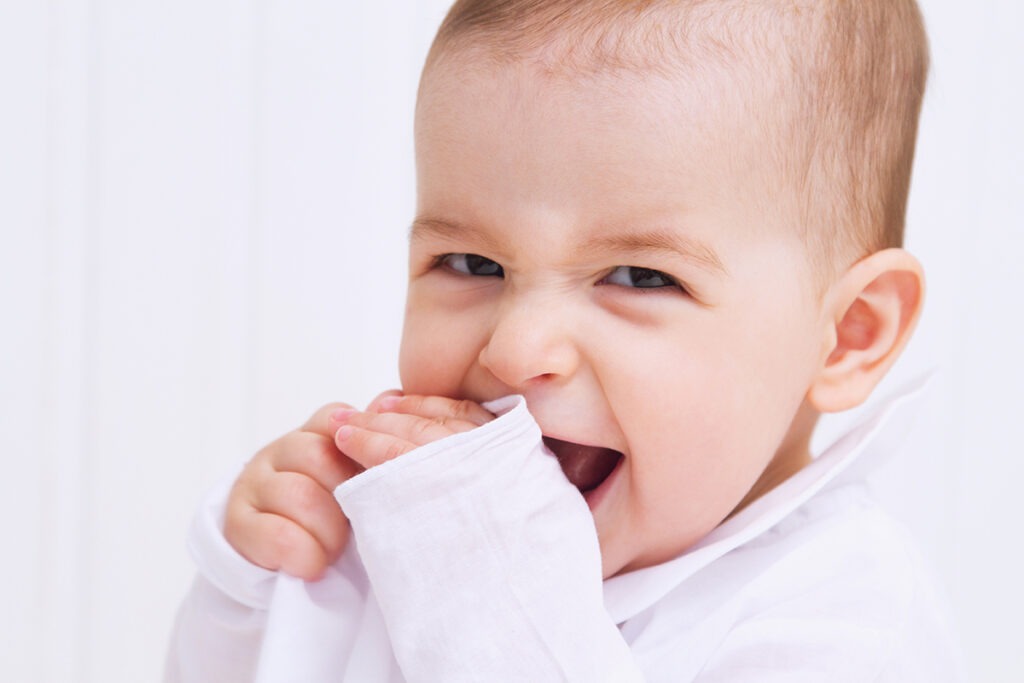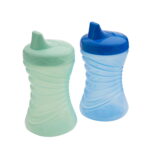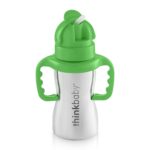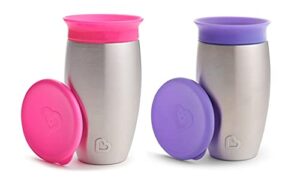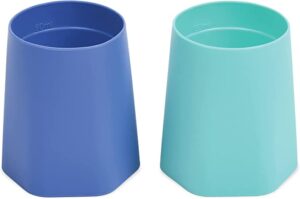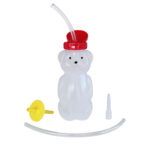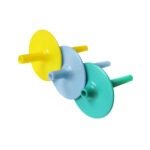But that’s not always the case.
Some parents continue to see excessive saliva pooling around their child’s mouth as they reach 2 or 3 years-old. When it’s too late to chalk it up to teething, what’s causing your toddler to drool?
From low muscle tone to enlarged tonsils, to a tongue thrust, there are several possible causes of drooling in toddlers. Sometimes getting to the bottom of why a toddler is drooling excessively can guide you on ways you can help eliminate it.
In some cases, the solution to eliminating your toddler’s drooling could be making a change at home, like having him or her drink from a different type of cup.There are also specific exercises you can do at home to help lessen drooling.
A Speech-Language Pathologist can help by completing an assessment that includes an Oral Motor Examination. During this examination, the therapist will look at the structure of your child’s oral musculature (including their cheeks, lips, jaw, and tongue) and assess his or her coordination, strength, and awareness/sensation of these muscles.
Here are some tips on how to get started with helping your toddler’s drooling.
#1: Pass on Pacifiers
Prolonged use of pacifiers can cause changes in the way that a child’s mouth and teeth are developed. Those changes in structure or strength can lead to drooling.
This can include:
- Dental malocclusion (misalignment of the teeth)
- Open Bite (a type of misalignment in which the teeth do not make contact in the front as they do in the back)
- Overjet (a type of malocclusion of the teeth in which the upper teeth protrude over the bottom teeth)
- Changes in the shape of the hard palate (roof of the mouth)
- Alterations in the muscle tone of the lips & tongue
Pacifiers aren’t all bad. Most babies have a strong sucking reflex, and pros of pacifier use include a soothing effect, possible help with sleeping, and a possible reduction in the risk of SIDS.
But according to the Academy of Pediatrics, if your toddler is beyond 2 to 4 years old and still using a pacifier, it’s time to tackle weaning him or her off of it. The same goes for thumb-sucking.
- Give your child positive praise for days they do not use a pacifier or suck their thumb (try sticker charts or other rewards!).
- If your child uses a pacifier to fall asleep, let him or her also hold a small blanket or stuffed animal to associate with comfort. Eventually, you can try only giving your child this comfort item without the pacifier.
- Distract your child by giving him or her something else to do with their hands – like playing with a toy.
If you’re concerned that prolonged pacifier use or thumb sucking have caused changes in the structure or function of your child’s oral musculature or teeth, consider seeking an evaluation from a specialist, such as a:
- Pediatric dentist
- Orthodontist
- Speech-Language Pathologist
- Pediatrician
These professionals can help determine if your child has an Orofacial Myofunctional Disorder (OMD).
#2: Skip the Sippy Cup
Weak lip, cheek, and tongue muscles can lead to drooling. One easy way to strengthen those oral muscles? Skip the sippy cup!
Sippy cups can delay muscle development. They block the tongue so it isn’t forced to practice a more advanced way of swallowing, by touching the roof of the mouth and propelling liquids back.
Toddlers who drink from a sippy cup with a hard spout for an extended amount of time may rest their tongue in a more forward position in their mouth at other times during the day.
This tongue protrusion can result in your toddler leaving their mouth open more at rest. Then, he or she is more likely to have some saliva leaking from the mouth (drooling).
What are some better alternatives to sippy cups?
Around 1 year old, try transitioning your child from a bottle to a cup with a different type of spout that will help strengthen his or her mouth muscles.
Straw Cup
Spout Free Cup
Open Cup
If drinking from these cups is tricky for your toddler, check out some other cups and tools that make the transition from a bottle a little easier and strengthen oral muscles:
With a stronger tongue, cheeks, and lips, your toddler can more effectively keep their lips together and their tongue back. And that can all help eliminate drooling!
#3: Have your Child’s Tonsils & Adenoids Checked
If your toddler drools and you see him or her breathing through their mouth often, try getting to the root of why they’re doing that.
A number of factors can lead to an open mouth posture or mouth breathing, including:
- Enlarged tonsils
- Enlarged adenoids
- Allergies
- Low muscle tone
In this case, it’s recommended that you take your child to a specialist who can take a further look. Possible treatments could include tonsil and/or adenoid removal (also known as a tonsillectomy and adenoidectomy), allergy treatments, or medications.
- Pediatric Ear, Nose, and Throat Doctor (ENT)
- Pediatric Allergist
#4: Improve Awareness
Improve your toddler’s awareness of drooling to help him or her manage it better, as their oral musculature continues to develop.
- When you notice your toddler drooling, keep your language positive while bringing their attention to it. Try saying something like, “uh oh – your mouth is wet!”. You can also show them in the mirror what it looks like when they have some excess saliva on their mouth or chin.
- Teach a way to help your child keep drooling under control. If you notice their mouth starting to pool up with saliva, remind your child, “don’t forget to swallow!”. Visuals with pictures that show this can be put around the house as reminders.
- Show your toddler what to do if he or she does notice some extra saliva around their mouth. For example, using their tongue to sweep it back into the mouth or having a bib or cloth handy they know to use to wipe their mouth as needed.
- Reinforce saliva management with positive praise! When you notice your child swallowing or wiping their mouth to manage their saliva, point it out and praise them with words and high fives.
5. Use an electric toothbrush or an oral motor tool known as a Z-Vibe to increase your child’s sensation and awareness within their mouth.
Additional Resources
TherapyWorks offers Speech Therapy, Occupational and Physical Therapy both in-home and through teletherapy (nationwide). If you would like to learn more, or discuss your child’s specific needs, please don’t hesitate to reach out to TherapyWorks!

